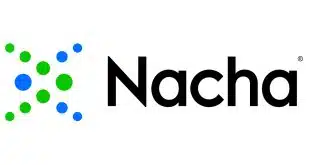With an eye on the image-exchange networks banks have built since Check 21 took effect more than five years ago, analysts at the Federal Reserve Bank of Chicago and the head of the rules-setting organization for image exchange are proposing a new form of payment that would allow consumers and businessmen to “write” checks on mobile phones and send them as digital images to individuals or businesses. This so-called electronic payment order, or EPO, would take advantage of existing image-exchange systems to route transactions, but unlike conventional check images the EPOs would be digital from the start, with no paper original or substitute check. The new payment form would also leverage the rapidly spreading base of smart phones like iPhones, BlackBerrys, and the new Nexus One, introduced earlier this week by Internet search giant Google Inc. “Today, smart phone ownership may appear to be limiting [for EPOs], but projected growth of those devices suggests that within two years, smart-phone ownership may eclipse Internet access,” notes Bob Meara, a senior analyst at Celent LLC, in an e-mail message commenting on the new concept. So far, the idea is only in the conceptual phase, with no action yet taken to move it to market, though a Chicago Fed paper on the subject suggests a number of ways that could happen. These include integrating the EPO into Web-based deposit-gathering strategies and relying on private agreements between banks to regulate EPO transactions. “We wanted to get people thinking about this idea and how it would be feasible,” says Katy Jacob, research specialist at the Chicago Fed and one of the paper's six authors. “We have a small group of bankers we meet with. People are interested in how it would work.” Richard Porter, a vice president and senior policy advisor at the Chicago Fed and another author of the paper, suggests banks or processors could work with wireless operators to push EPOs, which are expected in bulk to cost less than a penny each to process. “It's relatively cheap and could scale up quickly [with the existing image-exchange infrastructure],” he says. “Someone hooking up with a telecom could run with this.” The 28-page paper, entitled “Digital Checks As Electronic Payments,” appeared in November. Four of the authors are with the Fed. A fifth, Bruce Summers, retired from the Fed in 2007. The sixth is David Walker, president and chief executive of the Dallas-based Electronic Check Clearing House Organization, whose rules regulate image exchange. To pay with an EPO, a handset user would use software on his device to fill out and sign a “check” that would appear on the device's screen. The software would then send the encrypted image to the payee via the wireless network. Meara says the software could be made available through mobile-banking programs. The recipient of the payment would also have to have a phone or other device loaded with the EPO software to receive and endorse the instrument and to send it on to his bank. Security against fake items and other fraud could be bolstered with biometric access and a system in which paying banks would match incoming EPOs with separate instructions for each transaction, the authors suggest. The Fed paper notes the EPO could work well with Internet-based methods of deposit-gathering. Financial institutions like USAA Bank and ING Bank, which have no branches, already rely on such methods. Indeed, USAA last year introduced an application for the iPhone that allows customers to image checks for deposit. The Fed's Jacob argues the EPO, by removing paper altogether, would further drive down check-processing costs. “We're trying to push for a more efficient and cost-effective payment system as a whole,” she says. “This is one way to do it.” But Meara notes paper checks are already “dying a slow and irreversible death.” He argues banks may have a hard time coming up with a “compelling” edge for EPOs as compared with the welter of available electronic-payment alternatives. And, as the paper suggests, major card-issuing banks could refuse to support the EPO if they see it as a threat to the flow of interchange they get from card transactions. Jacob sees this as unlikely, since EPOs would mostly be used for person-to-person payments and for corporate transactions. But the Fed's Porter says the EPO's ultra-low cost could appeal to merchants. “Interchange fees on debit cards are pretty large,” he says. “It strikes me as completely crazy.” The next step appears to be figuring out how to make the EPO a commercial product. Porter says some sort of consumer incentive might help, but he says this idea is still undeveloped. “We can't address everything in one paper,” he says.
Check Also
Same-Day ACH Volume Rises 19%
Business, consumer, and government use of the automated clearing house network continues on its growth …





